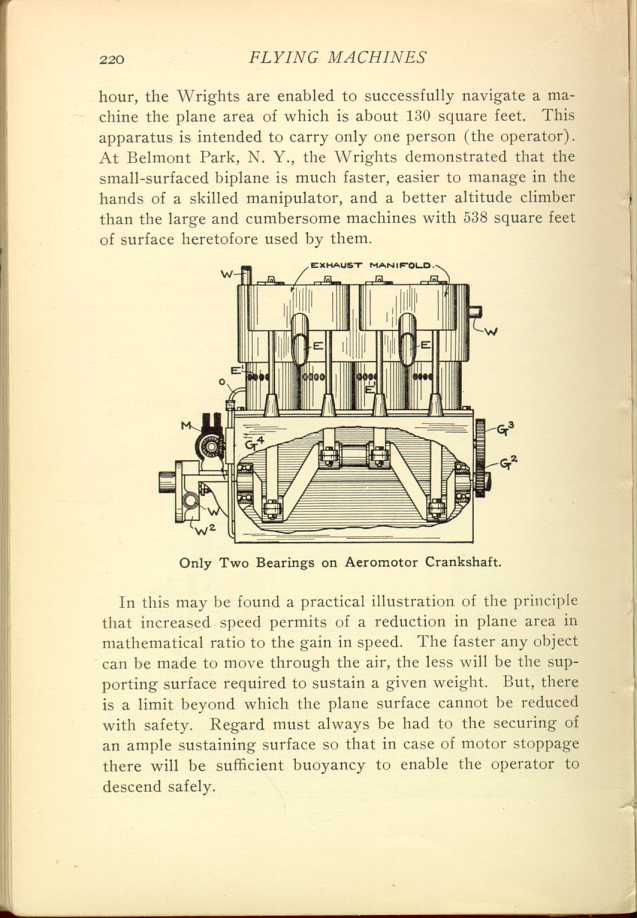| CHAPTER XXV.
NEW MOTORS AND DEVICES. Flying Machines: Construction and Operation: A Practical Book Which Shows, in Illustrations, Working Plans and Text, How to Build and Navigate the Modern Airship. | ||
Since the first edition of this book was printed, early in 1910,
there has been a remarkable advance in the construction of aeroplane
motors, which has resulted in a wonderful decrease in the amount of
surface area from that formerly required. Marked gain in lightness and
speed of the motor has enabled aviators to get along, in some instances,
with one-quarter of
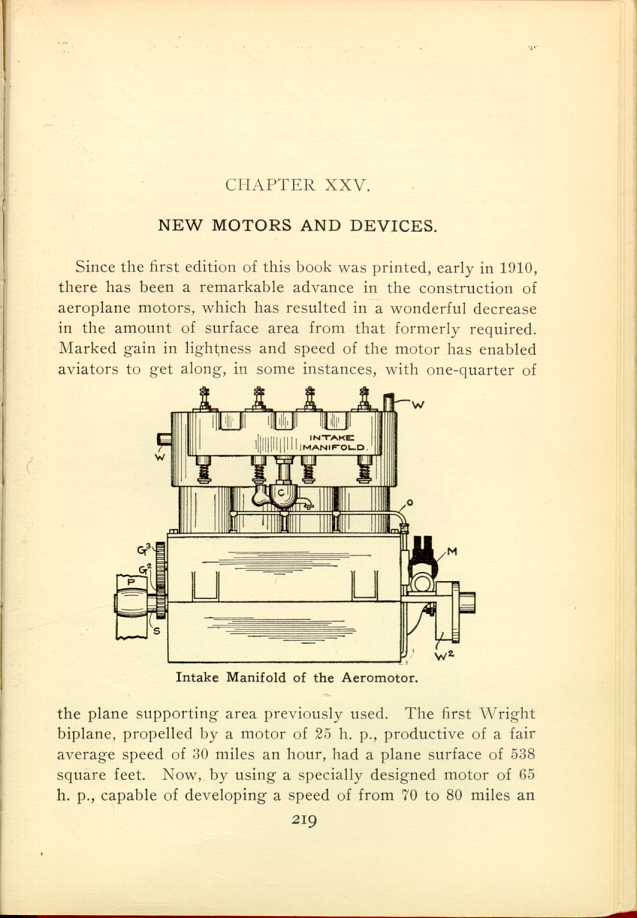
Intake Manifold of the Aeromotor.
[Description: Black and white illustration: Diagram of motor.]
In this may be found a practical illustration of the principle that increased speed permits of a reduction in plane area in mathematical ratio to the gain in speed. The faster any object can be made to move through the air, the less will be the supporting surface required to sustain a given weight. But, there is a limit beyond which the plane surface cannot be reduced with safety. Regard must always be had to the securing of an ample sustaining surface so that in case of motor stoppage there will be sufficient buoyancy to enable the operator to descend safely.
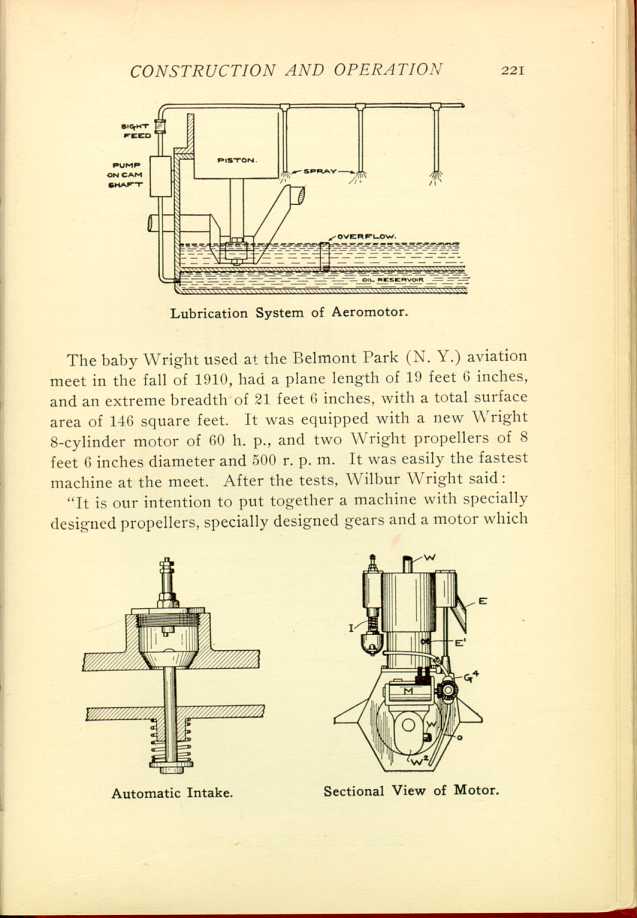
Lubrication System of Aeromotor.
[Description: Black and white illustration: Diagram of lubrication system.]The baby Wright used at the Belmont Park (N. Y.) aviation meet in the fall of 1910, had a plane length of 19 feet 6 inches, and an extreme breadth of 21 feet 6 inches, with a total surface area of 146 square feet. It was equipped with a new Wright 8-cylinder motor of 60 h. p., and two Wright propellers of 8 feet 6 inches diameter and 500 r. p. m. It was easily the fastest machine at the meet. After the tests, Wilbur Wright said:
"It is our intention to put together a machine with specially
designed propellers, specially designed gears and a motor which
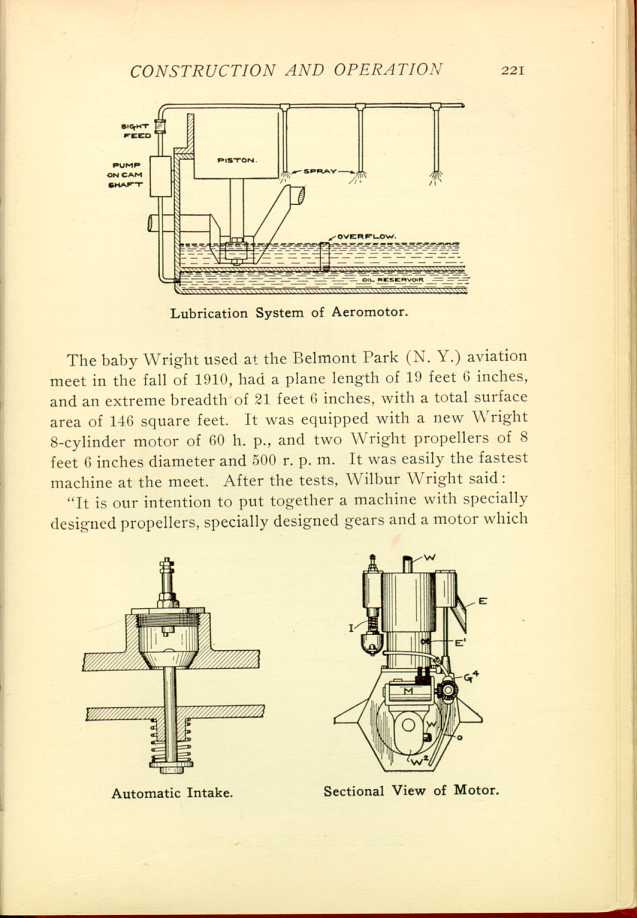
Automatic Intake.
[Description: Black and white illustration: Cross-section of automatic
intake.]
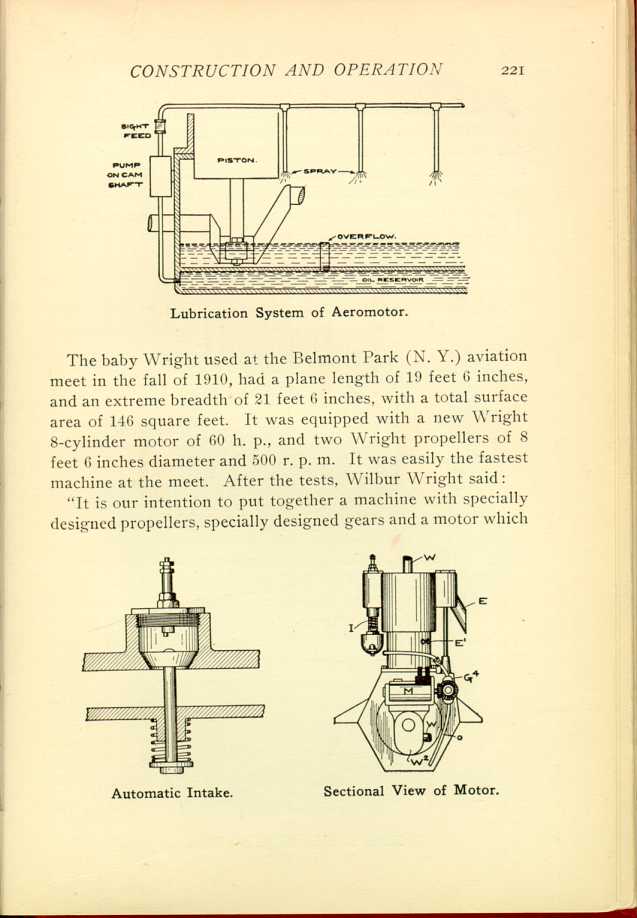
Sectional View of Motor.
[Description: Black and white illustration: Cross-section of motor.]
In the new Wright machines the front elevating planes for up-and-down control have been eliminated, and the movements of the apparatus are now regulated solely by the rear, or "tail" control.
| CHAPTER XXV.
NEW MOTORS AND DEVICES. Flying Machines: Construction and Operation: A Practical Book Which Shows, in Illustrations, Working Plans and Text, How to Build and Navigate the Modern Airship. | ||
